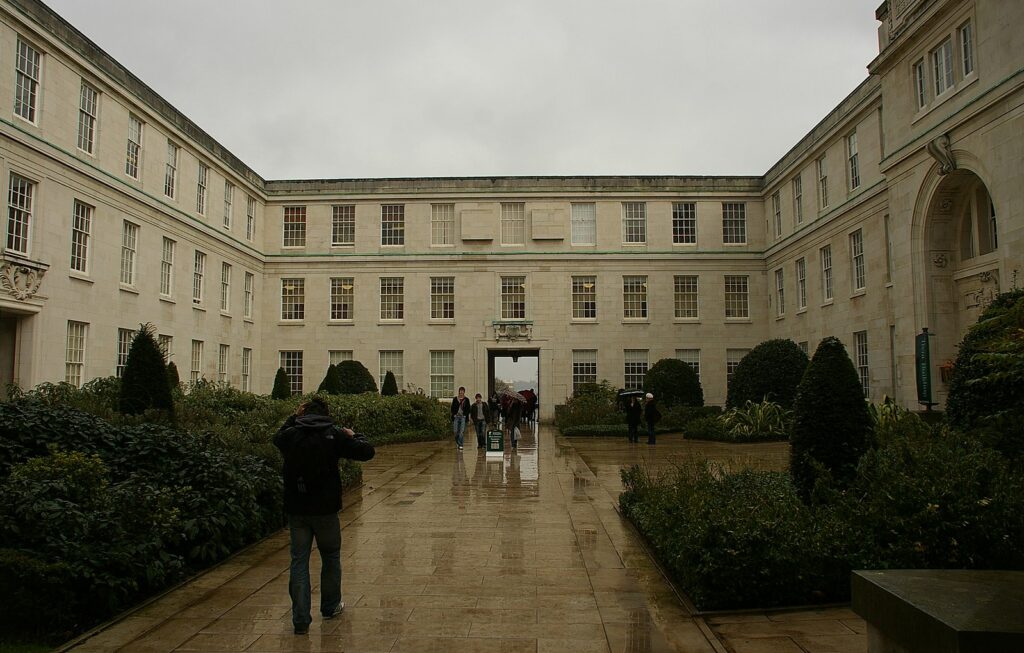The Fulbright Commission calls Nottingham University “one of the UK’s oldest, biggest, and most respected universities.” SCImago Institutions Rankings ranks it 126th among the world’s universities in 2019.
The University of Nottingham operates from four campuses in Nottinghamshire and from two overseas campuses, one in Ningbo, China and the other in Semenyih, Malaysia.
In this famous Nottingham buildings installation, we are covering the architecture and history behind the Trent Building, located at the University Park Campus. University Park has earned multiple honours for its design and landscaping, and has been awarded the greenest campus in the country in a Green Flag Award as It is centred around a lake and clock tower, and includes considerable parkland flora.
History
Built in 1928, the Trent Building makes an impact with its stunning architecture and views across Highfields boating lake and a large lawned area.
After the first world war, Nottingham University’s first campus, located in the city centre, was no longer large enough to accommodate the students.
Sir Jesse Boot’s generous donation of 35 acres of land at Highfields provided the solution, and the College moved to what is now University Park in 1928. It was first housed in the beautiful Trent Building, which was inaugurated by King George V in November of that year.
The College drew high-profile visiting professors from the start, including Professor Albert Einstein, Mahatma Gandhi, and H G Wells.
The Trent Building serves as one of the main administrative buildings of the University of Nottingham. It also contains academic facilities, principally for the arts and social sciences.

Image credit: M J Richardson
Architecture
The architecture was designed by Percy Richard Morley, who also designed the London School of Hygiene and Tropical Medicine. However his best known work was for the Boots the Chemist stores and, most importantly, the Trent Building and the layout of the Nottingham University Campus, which influenced design at other English universities.
The Trent Building serves as one of the main administrative buildings of the University of Nottingham. It also contains academic facilities, principally for the arts and social sciences.

The building is topped by a campanile (clock tower), is built of Portland stone and is protected as a grade II listed building. Writer D.H Lawrence once described the building as looking like an “iced cake”.
The main buildings of the university’s campuses in China and Malaysia are both modelled on University Park’s iconic Trent Building. In the case of the China campus this includes an exact replica of the clock tower.
Now
The building is still utilised for educational purposes, but now The Council Room, Senate Chamber, and Great Hall are outstanding sites for conferences, gatherings, formal celebration feasts, and weddings. The structure, which is steeped in history, is also used as a location for film and media productions.









